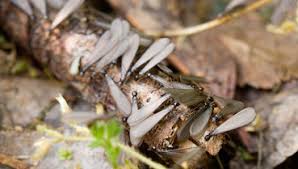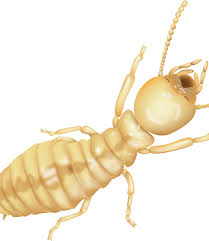The Termite Control Review Diaries
This webpage describes the three types of termite, subterranean, drywood and dampwood, and the most common termite species that are found in infestations around Australia.
Termites are categorized into three ecological categories according to their nesting and feeding habits: subterranean, drywood and dampwood.
Subterranean termites are the most frequent type of termite that are one of the most destructive pests worldwide and infests timber in buildings. Outdoors timber that is dead is mainly infested by them in contact with the dirt, such as fallen trees, stumps and fallen branches. They prefer even though they can digest wood, wood which has some amount of rust which makes it easier for them to digest it. .
Termite Control Specialists Fundamentals Explained
Subterranean termites need to be to live, making their nests in or near where they can easily acquire moisture. They tunnel to access timber or soil and they float down deeper to achieve moisture. .
Dirt is used by the termites as a substance to construct shelter tubes and nests, which can be composed of faeces, wood, soil and saliva. Some species construct carton nests above ground and build shelter tubes (also referred to as mud tubes) to link the nest into the soil.
Foraging is dependent on the weather, with higher activity in summer and minimal activity in conditions or winter . In tropical regions they could forage with peaks through warmer, wetter conditions.
The Definitive Guide to Termite Control Review
Drywood termites reside inside parts of timber, wholly in colonies less than 1000 individuals. There might be tiny colonies within a piece of wood or object such as a piece of furniture. They could feed across rings so that the galleries don't follow the grain of wood as is subterranean termites, but they tend to avoid heartwood.

Colonies can grow for many years undetected until the termites swarm or the timber breaks. Before the population reaches a critical point the winged alates, which are the exemptions that depart the nest, may not be produced for decades in a colony. They then leave the nest discover a new site in order to mate and begin a new colony, usually not and to pair up. .
Dampwood termites normally infest decayed timber that remains moist due to contact or through a water flow in a construction. They are most likely to infest timber that is outside stump or logs in contact with the soil.

The 15-Second Trick For Termite Control Review
Dampwood termites live inside the timber that they feed on and make open galleries. As with termites, they can infest timber for years until they are found, which is likely when the alates swarm from a mature colony. Swarming may happen with species swarming at times, over several months.
They are an indication of a moisture problem, if they're observed at a building. They are pests that are minor and can be controlled in buildings by removing the source of moisture. In trees that are live they have a tendency to feed on wood.
Species can be tricky to recognize, even for the specialists. Identification is usually based on the soldiers, that's the caste which has the features that were most readily distinguishable.
Of the pest species it is the Coptotermes species that are public enemy number 1 in Australia.
Termite Control Specialists - The Facts
The mind of the soldier is yellow and rectangular with darker, smooth thin mandibles. Body is left up to 7 mm long. It's easily confused with two other indigenous Coptotermes species, including C. frenchi and C. lacteus (Victoria Museum)
The soldiers produce a white sticky liquid from an opening (fontanelle) on front of head when defending the nest from assault.
Coptotermes species do not build mounds, except in other areas of Australia and Queensland. They stumps, nests in trees, poles, buried wood spaces, straight from the source around houses under buildings and in walls. Favoured trees for nesting are various eucalypts, English oaks and peppercorns. The colony is found in the lower part of the trunk or the root crown.
6 Easy Facts About Termite Control Review Shown
Although Mastotermes darwiniensis is the more destructive locally across its range in Australia coptotermes acinaciformis have become the termite species in Australia overall. C. acinaciformis attacks all timber structures and damages forest and ornamental trees in addition to fruit trees.